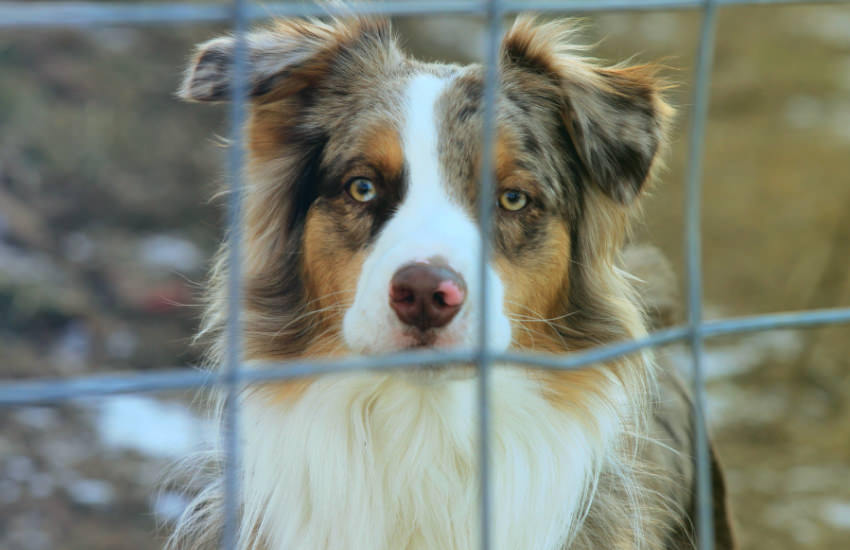Separation Anxiety with an Australian Shepherd Puppy?
Last Updated on May 4, 2024
Separation anxiety is a distress response you’ll see in dogs when they are alone or even if they are separated from their owners.
It is unclear precisely what causes separation anxiety, but there can be many contributing factors. Factors include improper conditioning when people leave, prolonged time alone, early separation from siblings, or traumatic events like abandonment.
During the lockdown/isolation periods due to COVID-19, many people either got a puppy or spent more time around their dogs than usual. Dogs learn and adapt to this new behaviour as their new way of life, so when people leave their houses again for work and generic travel, the dogs aren’t used to this treatment any more, leaving them severely anxious about being left home alone.
Table of Contents
Signs of Separation Anxiety
Separation anxiety can be a little different in each dog, but some things to watch for include the following:
- Destructive behaviour
- Whining/barking
- Peeing Inside (if your puppy is not housebroken yet, don’t worry about this one)
- Excessive licking
- Lack of appetite
- Packing, shaking or panting
- Following Behaviour: Australian Shepherd puppies tend to be very attached to their owners. Some following behaviour is expected.
These signs of separation anxiety generally happen within a short time of the owner leaving. You can set up an indoor camera while you are gone to watch your Australian Shepherd puppy and see if they are exhibiting any of these signs. This is the best way to determine if they have separate anxiety because the behaviour will likely change when you get home.
Treatment Options
There are several options for helping your Australian Shepherd puppy with separation anxiety. Not all of these treatments work for every puppy, so you may need to try a few different methods.
Physical activity: make sure your puppy is tired before you leave. Australian Shepherd loves physical activity. Make it a combination of mental and physical activity, like frisbee or agility. If you cannot do those, a walk, hike or playing with a toy can be great alternatives.
Training Against It
Does your puppy react when you pick up your car keys or purse? You can work with your Australian Shepherd puppy to reduce triggers of anxiety. Try picking up your keys or purse (or whatever they react to) a few times a day without leaving the house. This will teach them that the particular object being picked up does not immediately mean they are leaving.
Open and close the door without leaving throughout the day. Doors can be a trigger item for your Australian Shepherd puppy because that is how you leave.
When it comes time to leave, ignore your puppy unless they are calm and quiet. You want to encourage this behaviour over any high-energy anxious behaviour when leaving. Your puppy will start to associate you leaving with something good rather than a reason to become upset. Leaving a favourite treat or toy when you leave can also help.
Remember that some cases of separation anxiety will be beyond an owner’s ability to handle it. Punishment is not the answer because your puppy could be suffering from anxiety rather than acting out.
For extreme cases, discuss your options with a veterinarian or professional trainer. Each case of separation anxiety is a bit different, and they may be able to provide the right approach to help your Australian Shepherd puppy.

